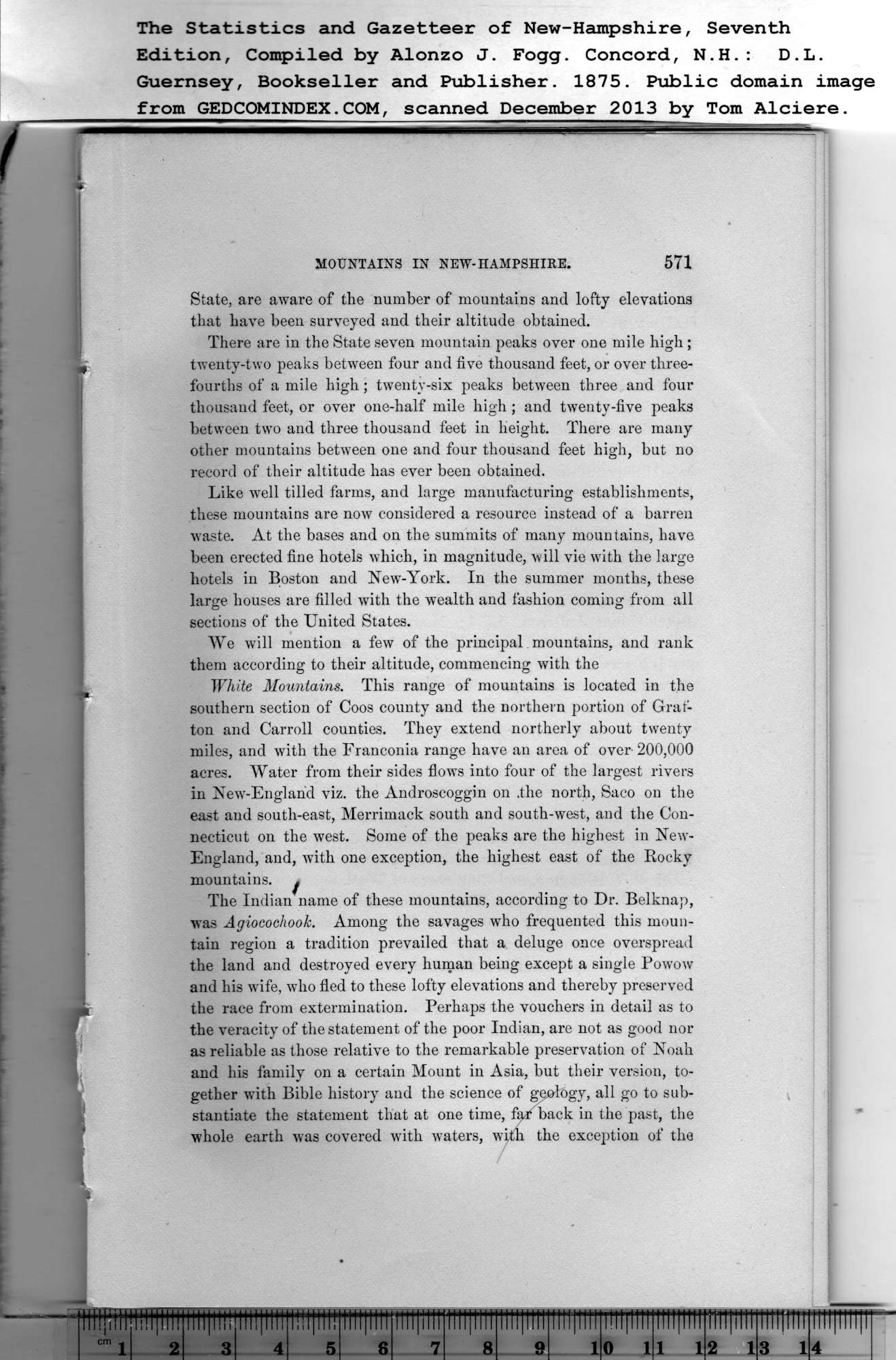|
(
MOUNTAINS IN NEW-HAMPSHIRE. 571
State, are aware of the number of mountains and lofty elevations
that have been surveyed and their altitude obtained.
There are in the State seven mountain peaks over one mile high;
twenty-two peaks between four and five thousand feet, or over three-
fourths of a mile high; twenty-six peaks between three and four
thousand feet, or over one-half mile high ; and twenty-five peaks
between two and three thousand feet in height. There are many
other mountains between one and four thousand feet high, but no
record of their altitude has ever been obtained.
Like well tilled farms, and large manufacturing establishments,
these mountains are now considered a resource instead of a barren
waste. At the bases and on the summits of many mountains, have
been erected fine hotels which, in magnitude, will vie with the large
hotels in Boston and New-York. In the summer months, these
large houses are filled with the wealth and fashion coming from all
sections of the United States.
We will mention a few of the principal mountains, and rank
them according to their altitude, commencing with the
White Mountains. This range of mountains is located in the
southern section of Coos county and the northern portion of Graff
ton and Carroll counties. They extend northerly about twenty
miles, and with the Franconia range have an area of over 200,000
acres. Water from their sides flows into four of the largest rivers
in Newr-Englan'd viz. the Androscoggin on .the north, Saco on the
east and south-east, Merrimack south and south-west, aud the Con-
necticut on the west. Some of the peaks are the highest in Newr-
England, and, with one exception, the highest east of the Rocky
mountains. ^
The Indian name of these mountains, according to Dr. Belknap,
was Agiocochook. Among the savages who frequented this moun-
tain region a tradition prevailed that a deluge once overspread
the land and destroyed every human being except a single Powow
and his wife, who fled to these lofty elevations and thereby preserved
the race from extermination. Perhaps the vouchers in detail as to
the veracity of the statement of the poor Indian, are not as good nor
as reliable as those relative to the remarkable preservation of Noah
and his family on a certain Mount in Asia, but their version, to-
gether with Bible history and the science of gpology, all go to sub-
stantiate the statement that at one time, fahback in the past, the
whole earth was covered with waters, with the exception of the
PREVIOUS PAGE ... NEXT PAGE
This page was written in HTML using a program written in Python 3.2
|
